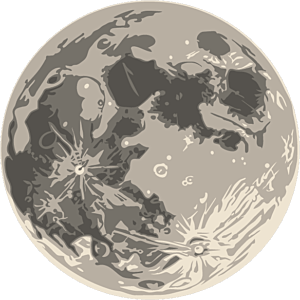The Downlink • Mar 18, 2022
Beyond the far side
Space Snapshot

This view of the Moon isn’t the one we’re used to seeing. The Moon is tidally locked to the Earth, meaning it rotates at a speed that keeps one face pointing toward us as it orbits. From the ground, we only ever see what’s called the near side of the Moon, with its familiar dark splotches. Learn why the two faces of the Moon are so different, and what this dichotomy can teach us about our planet and its natural satellite. Pictured: The lunar farside imaged by NASA’s Lunar Reconnaissance Orbiter. Image credit: NASA/Goddard/Arizona State University.
You love space, now take action
This weekly newsletter is your toolkit to learn more about space, share information with your friends and family and take direct action to support exploration. Anyone can subscribe at planetary.org/connect to receive it as a weekly email.
Mission Briefings


NASA’s most daring little helicopter just got a big mission extension. With 21 successful flights on the books, Ingenuity will now journey into the ancient river delta of Mars’ Jezero Crater along with Perseverance. The ’copter was originally planned to operate for about 30 days. Pictured: An image of Ingenuity taken by Perseverance’s Mastcam-Z instrument. Image credit: NASA/JPL-Caltech/ASU.

A tiny asteroid impacted Earth’s atmosphere — but don’t worry, we knew it was coming. On March 11, asteroid 2022 EB5 collided into our planet’s atmosphere over the Norwegian Sea; the small object subsequently disintegrated and no damage was caused. Two hours before impact, scientists spotted the asteroid and began predicting its movement, making it one of just five asteroids discovered before hitting Earth’s atmosphere.

ExoMars’ future has become more unclear. The ESA-Roscosmos mission was recently delayed due to Russia’s invasion of Ukraine, but it’s now suspended until further notice. In a statement, ESA said it “acknowledged the present impossibility of carrying out the ongoing cooperation with Roscosmos on the ExoMars rover mission with a launch in 2022.”

Eugene Parker, for whom NASA’s Parker Solar Probe is named, has died at 94. Parker was a heliophysicist who famously created a mathematical theory that predicted solar wind. “Dr. Eugene Parker’s contributions to science and to understanding how our universe works touches so much of what we do here at NASA,” NASA Administrator Bill Nelson said. “Dr. Parker’s legacy will live on through the many active and future NASA missions that build upon his work.”
From The Planetary Society

Meet the first STEP grant winners! Our Science and Technology Empowered by the Public (STEP) grant program, first announced in 2021, supports projects that contribute to exploring other worlds, finding life, and defending Earth from dangerous asteroids. The proposals that won the first round of grants are a project from a team at the University of California Los Angeles led by Professor Jean-Luc Margot that engages citizen scientists in the search for extraterrestrial intelligence using data from the world’s largest steerable radio telescope (pictured), and a project from a team at the University of Belgrade, Serbia, led by Professor Bojan Novaković that uses a new technique to study near-Earth asteroids. Learn more about these fascinating projects in the announcement article and listen to interviews with the winners on this week’s Planetary Radio Image credit: AUI/NRAO/GBO.
What's Up

The predawn is planet time, with Venus shining very brightly in the east with reddish Mars and yellowish Saturn lower to the horizon. In the evening, enjoy good views of Orion and the Pleiades. Learn more at planetary.org/night-sky.
Share your artwork with us!
We love to feature space artwork in the Downlink. If you create any kind of space-related art, we invite you to send it to us by replying to any Downlink email or writing to [email protected]. Please let us know in your email if you’re a Planetary Society member!


 Explore Worlds
Explore Worlds Find Life
Find Life Defend Earth
Defend Earth



